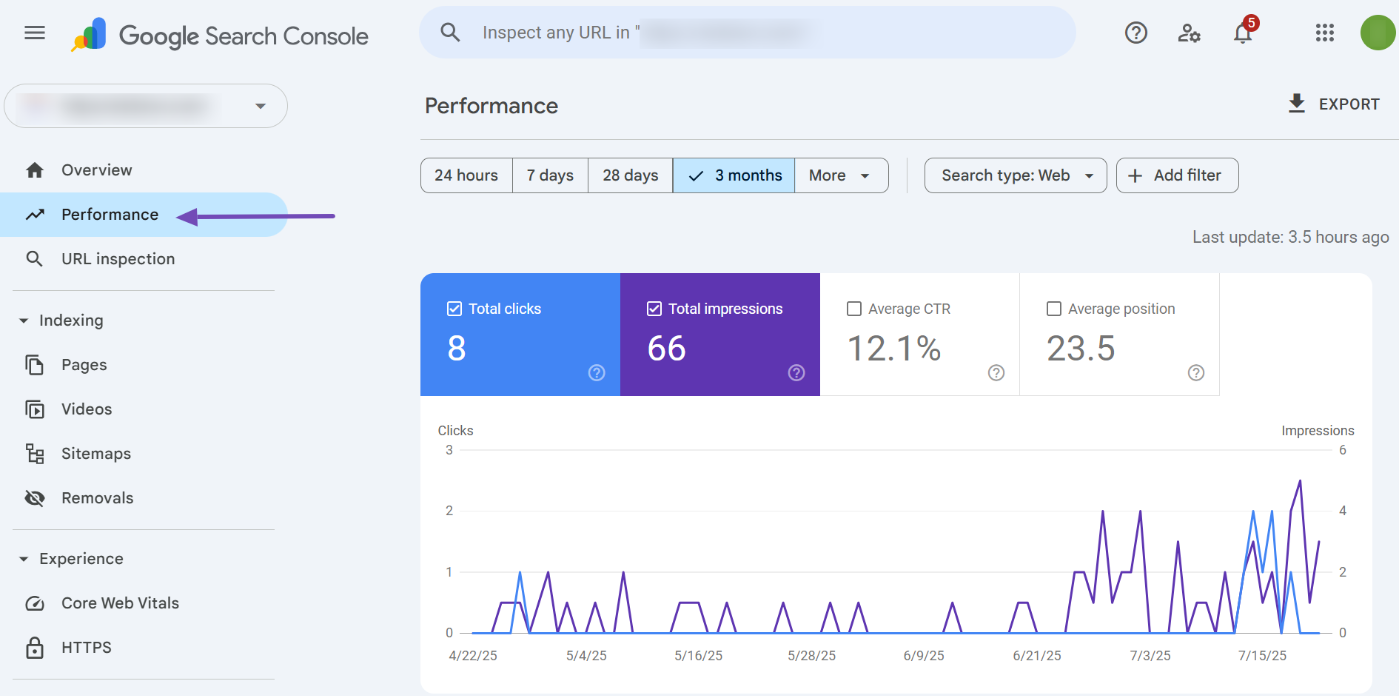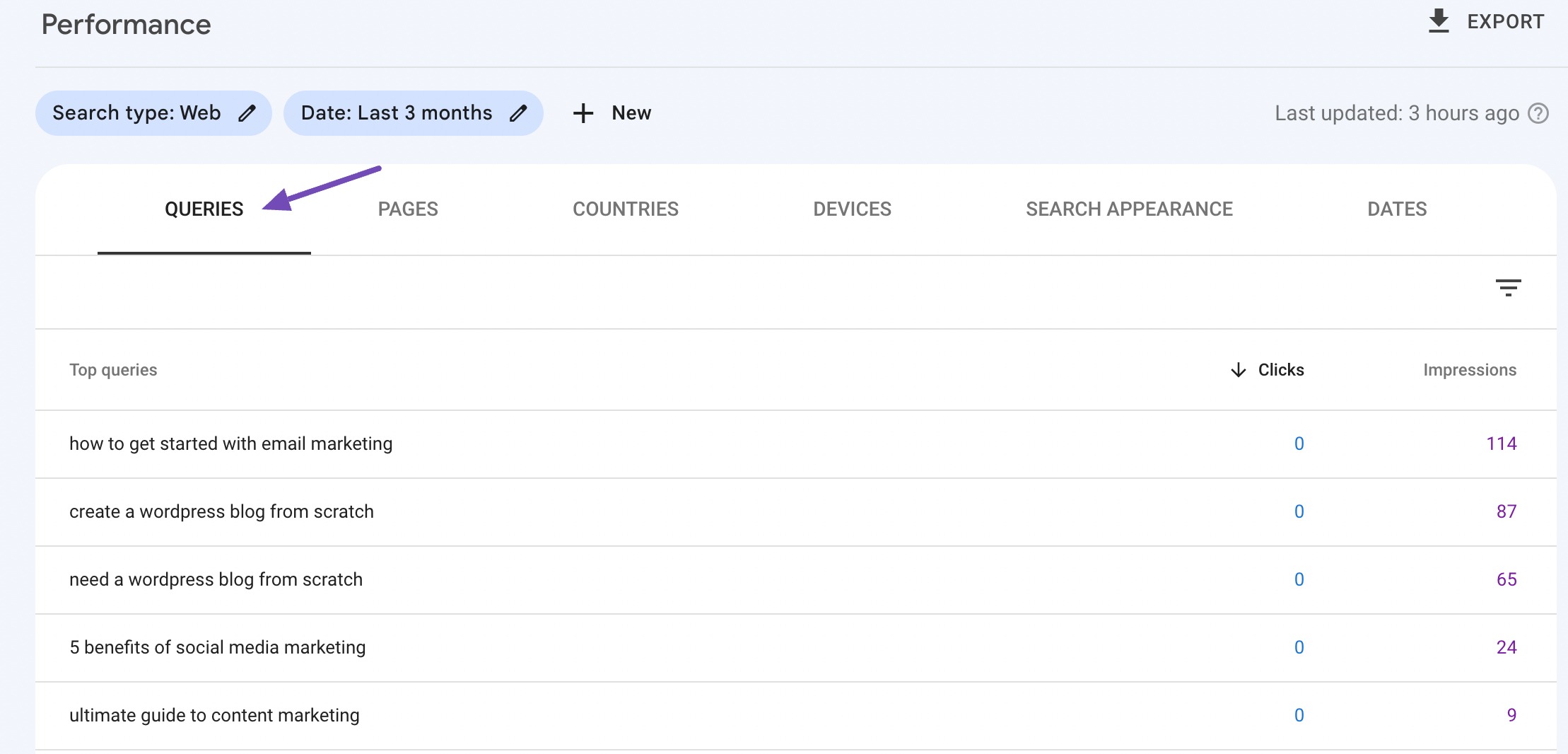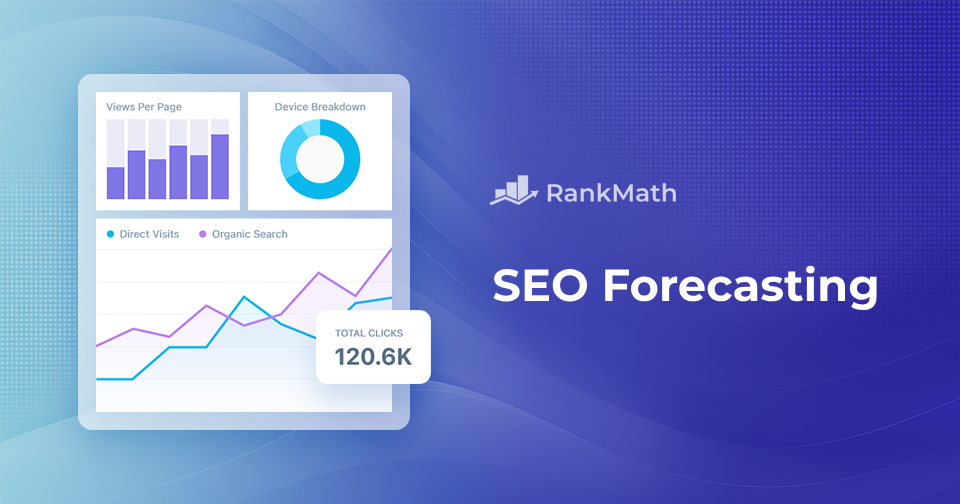If you manage a website, one question likely comes up often: How much traffic can I expect next month? That’s where SEO forecasting comes in.
Rather than relying on gut instinct or vague goals, SEO forecasting gives you a data-driven way to estimate future performance.
In this post, we’ll discuss what is seo forecasting and its importance, and help you forecast your SEO success step by step, so you can turn raw data into actionable insights and set your strategy up for long-term growth.
So, without any further ado, let’s get started.
Table Of Contents
1 What is SEO Forecasting?
SEO forecasting is the process of predicting future results, like traffic, rankings, or leads, from your SEO efforts using existing data and trends.
Let’s say you’re planning to publish blog posts about AI SEO tools. Instead of guessing how they’ll perform, you check keyword search volume, estimate potential rankings, and calculate possible traffic and leads based on your current conversion rate.
For example, if the keywords have a total monthly volume of 10,000 and you estimate ranking in the top 5 (with around a 7% click-through rate), you can forecast about 700 monthly visits. With a 3% conversion rate, that’s around 21 new leads per month.
This way, you’re not just hoping your content performs; you’re making informed predictions.
2 Why is SEO Forecasting Important?
SEO forecasting takes the guesswork out of your strategy and replaces it with clarity. Rather than crossing your fingers and hoping for better rankings or increased traffic, you can use real data to set realistic expectations, shape your strategy, and estimate potential ROI.
Here’s why it matters:
- Sets Clear, Achievable Goals: Forecasting helps you understand what’s realistically possible based on current trends and performance. It keeps you—and your team or clients—grounded with measurable goals and avoids the trap of overpromising or underdelivering.
- Justifies SEO Budgets and Resources: If you need to secure buy-in from stakeholders or clients, numbers speak louder than opinions. Forecasting lets you back your strategy with projections on traffic, conversions, and revenue, making a stronger case for investment.
- Aligns SEO with Business Objectives: SEO isn’t just about ranking higher, it’s about driving results. Forecasting links your SEO efforts to tangible business goals like lead generation, sales, or sign-ups, ensuring your strategy supports the bigger picture.
- Helps You Measure and Optimize Over Time: With a forecast in place, you can track actual performance against your predictions. This makes it easier to identify what’s working, spot missed opportunities, and fine-tune your strategy for even better results.
3 Metrics to Track in SEO Forecasting
We’ve listed some key metrics to track in SEO forecasting.
- Organic Traffic: Measures the number of visitors coming to the website through unpaid search engine results, reflecting SEO visibility and user engagement.
- Keyword Rankings: Indicates where website pages rank in search engine results for specific keywords, allowing visibility and competitiveness to be assessed.
- Click-Through Rate (CTR): Reflects the percentage of the audience clicking on website links in search results, indicating the effectiveness of title tags, meta descriptions, and search snippets.
- Conversion Rate: The percentage of visitors taking desired actions, such as purchases or sign-ups.
- Bounce Rate: Indicates the percentage of visitors leaving the website after viewing only one page, reflecting content relevance and user experience.
Refer to our dedicated tutorial on free SEO tools to help you track the most important metrics for your website.
4 SEO Forecasting Tools
Let us now discuss the various SEO forecasting tools.
4.1 Google Trends
When you’re forecasting SEO performance, understanding how search interest changes over time is just as important as knowing search volume. That’s where Google Trends becomes a powerful tool.
Spot Seasonal Trends
Some keywords peak at certain times of the year, think Black Friday deals or tax filing software. Google Trends shows you when interest historically spikes and dips, so you can predict traffic fluctuations and time your content accordingly.
For instance, if you run an eCommerce site and notice that the best running shoes trend upward every June or July, you can forecast a higher traffic potential for that keyword around that time.

Validate Rising Topics
Before investing time in content creation, you can use Google Trends to see if a keyword is gaining popularity or declining. This helps you focus on content that has long-term potential, not just a temporary spike.
For instance, you’re thinking of writing about AI SEO tools. When you search it on Google Trends, you see a steady rise over the past 12 months. You include it in your forecast with a growth curve, assuming traffic will continue increasing over the next 6 months.

Compare Keyword Opportunities
Google Trends allows you to compare keywords side-by-side to see which one has a stronger upward trend, helping you forecast which topic might drive more traffic in the future.

Detect Regional Differences
Google Trends breaks down interest by location, which is especially useful if you’re doing local SEO forecasting. You’ll know exactly where search demand is highest and can forecast traffic or leads based on region-specific data.
If you’re targeting a digital marketing course and notice it’s trending in Delhi but not in Mumbai, you can align your forecast and strategy accordingly.

4.2 Google Search Console
Google Search Console (GSC) is one of the most powerful tools for SEO forecasting because it gives you real performance data straight from Google, no guesswork, no third-party estimates.
Track Historical Performance Trends
By looking at your site’s clicks, impressions, CTR, and average position over time, you can identify growth patterns or seasonal trends and use them to forecast future performance.
You can find these metrics in the Performance section of the Google Search Console, as shown below.

Identify High-Potential Keywords
You can identify high-potential keywords using Google Search Console. Scroll down to the QUERIES data to view your top-performing queries.

Segment by Page, Country, or Device
Google Search Console lets you filter performance data by URL, country, and device, helping you build more targeted forecasts.

4.3 Google Analytics
While Google Search Console tells you how users find your website on Google, Google Analytics (GA) shows you what they do after they land on your site. This makes it an essential tool for SEO forecasting, especially when you want to predict not just traffic, but also conversions, revenue, engagement, and user behaviour trends.
Analyze Historical Organic Traffic Trends
By analyzing historical organic traffic, you can spot growth patterns, seasonal dips, or spikes, and use those trends to predict future traffic.
Navigate to Life cycle → Acquisition → Traffic acquisition in GA4. Filter by the Organic Search channel. Set the date range to the last 6–12 months to view long-term traffic trends.

Segment Traffic by Device, Location, and Source
Use the Compare + Add filter options in reports to segment your data. For example, compare mobile vs web traffic, or traffic from different countries or cities.

Identify Top-Performing Landing Pages
Navigate to Life cycle → Engagement → Landing page. Filter for organic traffic to see which SEO pages are driving the most business value.

5 Different Methods of SEO Forecasting
Let us now discuss the ways you can perform SEO forecasting.
5.1 Historical Trend Analysis
Historical trend analysis involves examining your past SEO performance, such as organic traffic, rankings, impressions, and clicks, to identify patterns and use those insights to predict future results.
It’s one of the most reliable methods for forecasting because it’s based on actual performance data from your own site.
To do so, open Google Analytics or Search Console. Go to the Performance tab in Google Search Console or use GA4’s Traffic acquisition report. Determine your year-over-year or month-over-month growth. Use these numbers to project future traffic.
Get at least 6–12 months of organic traffic data. Export the Data in Google Sheets or Excel.

Next, calculate Monthly Growth Rate. Formula:((This Month's Traffic – Last Month's Traffic) / Last Month's Traffic) × 100
For Yearly Growth Rate the formula will be:
(Current Year - Previous Year) / Previous Year * 100 = Growth Rate (%)
Take the average growth rate from the past 6–12 months and apply it to your future traffic estimates.
Use the =Previous Month * (1 + Growth Rate) formula in the sheets to forecast.
For instance:
| Month | Traffic |
| January | 5,000 |
| February | 5,500 |
| March | 6,050 |
Avg Growth Rate = ~10%
Forecast April: 6,655 (6,050 * 1.10) = 6,655
By continuing this pattern, you can build a realistic projection for upcoming months based on your actual historical trends.
5.2 Create a Spreadsheet Based on Historical Performance
A spreadsheet gives you a clear picture of past performance and helps you project future SEO outcomes by analyzing growth patterns, seasonality, and campaign impact.
Once you have collected the historical data, open a spreadsheet program like Excel or Google Sheets.
In your spreadsheet, create columns for each month and include key metrics like Month, Organic Sessions, and Conversions. Then, add a column for Month-over-Month Growth. This growth column should calculate the percentage change from one month to the next, helping you spot trends in performance.
Once your past data is in place, you can use it to project future performance. Apply the average monthly growth rate to forecast traffic for the upcoming months. Your sheet might look like this:

5.3 Competitor Analysis
Competitor analysis in SEO forecasting helps you understand where your competitors are gaining traffic, what keywords they’re ranking for, and what content strategies are driving their growth.
When used properly, it allows you to predict market movements, set realistic traffic goals, and adjust your SEO tactics for maximum impact.
With Rank Math PRO’s Side-By-Side Comparison feature, you can compare this with known benchmarks or similar analyses of competitor sites.
Navigate to Rank Math SEO → SEO Analyzer in your WordPress dashboard.

Select the Side-by-Side Comparison icon. Enter a competitor’s domain. And you can identify areas where your competitors may have an edge.

You can also use the Ubersuggest tool for competitive analysis. Enter the domain of a competing website you want to track, and click SEARCH.
Analyze data from:
- Traffic Overview: Monthly visitors, top-performing pages, and traffic trendlines.
- SEO Keywords: What keywords drive most traffic for your competitor.
- Top Pages: See which articles or pages are most successful.

6 Conclusion
SEO forecasting helps you take the guesswork out of your strategy.
Having a forecast gives you a sense of direction. It allows you to measure what’s working, spot potential challenges early, and make smarter decisions along the way.
Remember, your forecast doesn’t have to be perfect. What matters is that you’re making informed decisions based on trends, not just relying on gut feeling.
If you like this post, let us know by Tweeting @rankmathseo.
